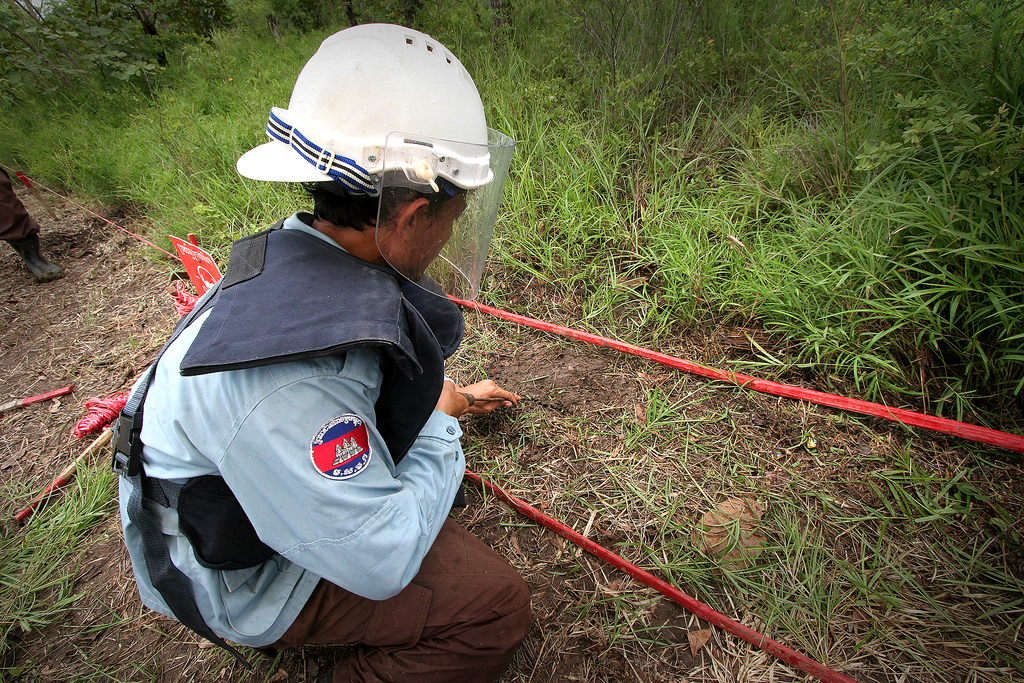In 1998, when returning to Vietnam with National Geographic Magazine, Tran Van Dinh encountered five American soldiers in a hotel, two black men and three white. He asked them why they were in Vietnam. They explained that, back in the United States, they had seen a television program on the problem of war-era mines exploding and killing farmers in their fields. They recognized the mines as ones they themselves had buried during the war. They contacted the Pentagon for maps, collected money from neighbors for their return mission, and then went back to Vietnam — this time to remove the mines from the fields. Tran was amazed deeply moved by the men’s story and it transformed his perspective of American soldiers and helped him fundamentally reconsider the meaning of “enemies”.
 Tran Van Dinh’s experience with the American soldiers returning to Vietnam to deactivate landmines left by the United States military offers a powerful model for thinking about ways to work for reconciliation and healing in the aftermath of conflict and violence. More than simply an interesting exchange, the encounter offers an insight into a model of profound importance.
Tran Van Dinh’s experience with the American soldiers returning to Vietnam to deactivate landmines left by the United States military offers a powerful model for thinking about ways to work for reconciliation and healing in the aftermath of conflict and violence. More than simply an interesting exchange, the encounter offers an insight into a model of profound importance.
Compassionate Concern for the Other
The story of the soldiers’ return to Vietnam begins with their hearing a story on TV about how Vietnamese peasants were getting killed and maimed by the legacy of the landmines that were left from the Vietnam war. Rather than simply turning the channel, or filing this story in the back of their minds along with the dozens of other tales of suffering that one hears in a day, the former soldiers felt a deep sense of compassion and connection with the plight of a people who had once been labeled as an enemy, an Other.
A Sense of Personal Responsibility for Righting a Wrong
Even beyond the general sense of compassion the soldiers felt, what makes their response a model of hope is the fact that they felt personally responsible to make amends for the suffering of the Vietnamese peasants because their suffering was the direct result of previous actions on the part of the U.S. forces. Their connection to those same forces led to a feeling of direct responsibility to address the problem, and they took it upon themselves to right the wrongs that were still causing harm decades after the conflict had ended.
Deactivating the Violence of the Past to Restore Hope to the Future
The soldiers returned to the battlefields of Vietnam with one concrete goal in mind: digging up the remaining land mines in the countryside of Vietnam so no more people would be hurt. But their actions also stand as a symbolic gesture and an elegant metaphor for any number of efforts to promote healing and reconciliation. Sometimes the land mines of the past are public policies that institutionalize inequalities, or crimes left unsolved, or harms inflicted without reparation. Those who wish that others would simply “move on” from past injustices would be wise to learn from this model, and make sure that the violence inflicted in past times has been properly deactivated in the fields on which we would construct a new future.